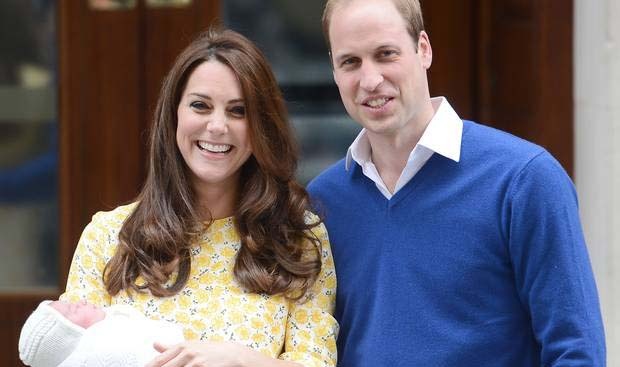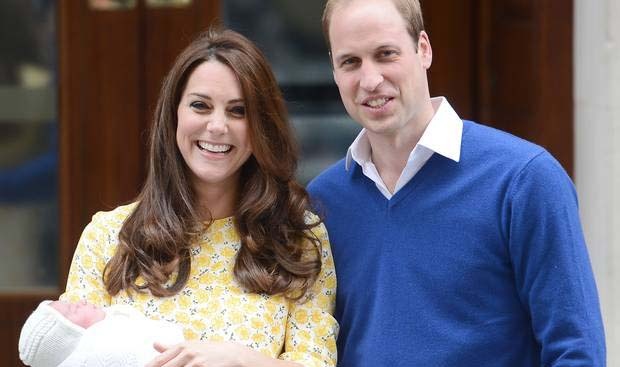
Postnatal exercise and nutrition tips
May 5, 2015
Topics:
The arrival of Royal Baby number two will probably mean the spotlight turning to all things post natal so, with this in mind we have some top tips for women who want to regain their pre-pregnancy figure with a health and fitness plan. Nutritionist, Ben Coomber of Body Type Nutrition, also shares his top five postnatal nutrition tips.
Garry Kerr, Head of Operations at BMF give his top tips on postnatal exercise…
You have just given birth and are recovering from one of the most challenging periods in your body’s life and it will take time to get back to fitness. While celebrities may have their beach body back in a matter of weeks they will also have childcare help, a personal trainer several times a week and nutritional advice and supplements. You will be able to achieve the same results but it will take time. I wanted to share with you some advice and exercises you can do after having a baby to help you get back on track with fitness.
After a ‘normal’ birth you should receive a six-week check up from your doctor or midwife. This should include an abdominal separation check. What is being checked is that the Rectus Abdominus, the ‘six pack’ has returned to its normal state and it is ok to start doing abdominal exercises again. For a C-Section, the all clear is usually given by 12 weeks and the same check should be carried out. However bear in mind that there will be some external and internal scarring that takes time to heal, sometimes the internal scarring can last a very long time and this can lead to discomfort when doing certain exercises or moving a certain way.
Your body will be producing the hormone relaxin, which causes the joints to be more mobile and susceptible to injury; this helps with the birth but remains in your system for months after, this is longer if breastfeeding. Be careful when you exercise not to overdo any range of movement.
I would not recommend you start training before either your six or 12 week check or get the all clear from a medical professional.
Frequency of post-natal exercise
You will be tired, not just from what your body has been through, but also the lack of sleep at night and the effort of trying to retain a ‘normal’ life with a newborn demanding everything of you! Again, you will know your body better than anyone else, so if it feels ok then do it, if it doesn’t, then don’t!
It is best to start gently and build up a gradual progression on returning and not dive in headfirst and find you’re wiped out after 10 minutes! Be under no illusions, you will initially tire much quicker than you did before. If in any doubt, consult your doctor/midwife.
Here are my key exercises that you should be doing and how to do them:
Squats
- Stand with your feet just under shoulder width apart, bend knees and hips, lowering torso between the legs.
- Once you are as low as you can go, reverse direction to stand up straight again.
- The torso remains upright throughout the movement.
- Once you have returned to your original position, start again.
Aim: 30 squats, repeat three times. Begin with three sets of 10 and slowly increase.
Why: A squat is the perfect exercise to keep your legs toned. The main emphasis is on the thighs and buttocks but it also involves the hamstrings, calves and lower back. You will need strong legs to push and carry your newborn around!
Lunges
- Stand with your feet just under shoulder width apart, step forward with 1 leg and lower your rear knee to the ground.
- You should have a 90-degree bend in both knees.
- Step back and return to your start position.
- Repeat on the other leg
- The torso remains upright throughout the movement.
Aim: 30 lunges, repeat three times. Begin with three sets of 10 per leg and slowly increase.
Why: A lunge is a great exercise to keep your bum toned. The main emphasis is on the thighs but will also work your buttocks. This is a great way to get your pre-baby bottom back!
Plank
- Lie flat on your front and on your forearms. Slowly raise yourself so you are balancing on your toes and forearms. There is also the option to do this on your knees too if you have suffered quite a large amount of trauma to the abdomen.
- Hold this position with a flat back and spine. Don’t stick your bum up in the air and make sure you suck the belly button to the spine and tense your glutes to protect the spine.
- You should feel your abs trying to keep you still.
- Relax and lower yourself back to the floor.
Aim: 60 second hold, repeat three times. Begin with 20 seconds, but remember to ensure you have had your postnatal check up before doing abdominal exercises.
Why: This will help strengthen and tone your tummy without risking injury.
Tricep dips
- Begin sitting on a step or park bench and hold on to the edge.
- Walk your feet out in front of you until you pivot on your heels.
- Bend the elbows and lower body, keeping the shoulders away from your ears and the elbows parallel to one another.
- Push back up to starting position.
Aim: 12 dips, repeat three times. Begin with three sets of six and increase from there.
Why: This exercise is great because it also involves other muscle groups - the shoulders, abs and back all work to keep you stable and it will work your legs too!
Ben Coomber, owner of Body Type Nutrition, gives his top five postnatal nutrition tips…
1. Don’t consider what ‘diet’ to go on, just change your habits back to the ideal, back to how they were before. We all know what we should be eating, fruits and vegetables, protein, healthy carbs and fats, with as much of it as one ingredient foods as possible. So lose the ‘I need a diet’ mentality, you don’t, it’s just a simple case of shifting your habits back to what is healthy, and if there is weight to lose simply eat less.
2. It’s important to work out how food makes you feel, this is the best way to banish cravings. You can do this by listening to your body as a result of the food you eat. For example, if you eat a bowl of porridge for breakfast, and a few hours later you are sleepy, it might be because it’s too carbohydrate dense, it needs more protein and fat to balance it out. Next time have less porridge and have it with 2 eggs, increasing the protein and fat content. If you then feel better for the next 4-5 hours you are less likely to get cravings and snack on bad foods.
3. Ensure you keep your caffeine intake as low as possible. While caffeine is great for keeping the mind sharp, it can be very stressful for the body and on our hormonal system. This is a key time for your hormones to rebalance. Having a low caffeine intake will aid this, and bring your body and mind into balance a lot quicker.
4. Be diligent with your sleep, which I know is easier said than done. One of the major complaints of parents once their baby comes is the lack of sleep. Your up at odd hours, and when your baby does sleep you have stuff to do, but whatever opportunity you have, sleep. A lack of sleep, classed as less than 6 hours sleep a night, increases cravings, and leaves you feeling fatigued, a primary reason you will snack on bad sugary foods, cause you have the feeling that you have no energy. Sleep where possible, whenever possible.
5. Eat as many vegetables as possible, this will allow you to eat a high volume of food, get as much nutrition into your body as possible, with a minimal affect on your calorie intake. Due to the fibre, and sheer volume of food it will keep you full for longer, helping you manage your weight, and to lose weight better as you wont feel the need to eat as often as your energy and hunger is under control.

